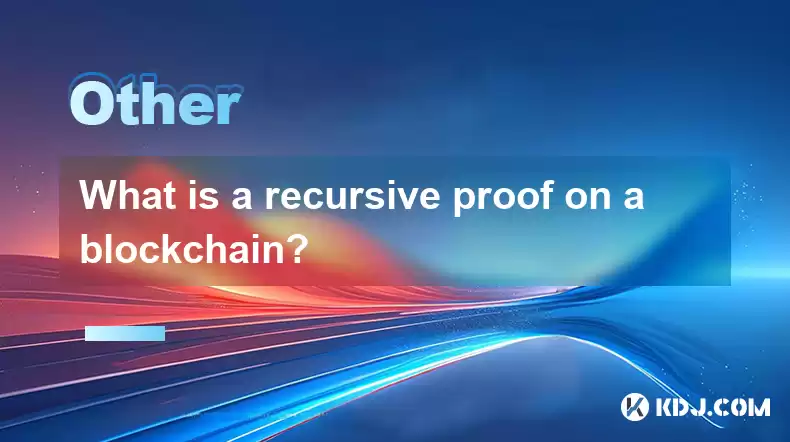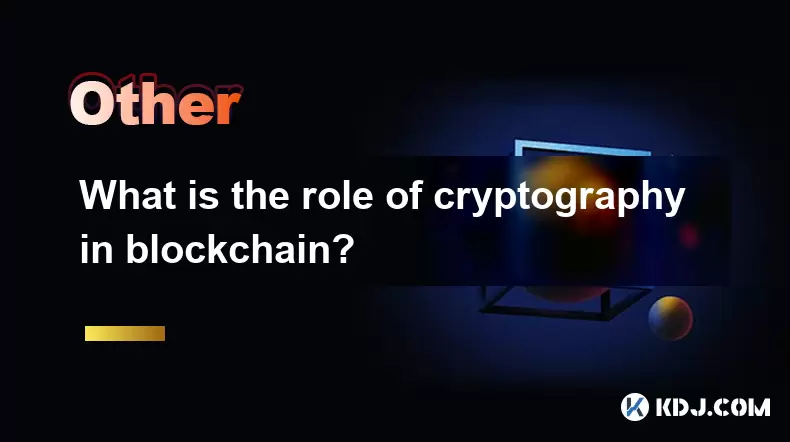-
 Bitcoin
Bitcoin $113900
0.47% -
 Ethereum
Ethereum $3491
-0.42% -
 XRP
XRP $2.876
-1.87% -
 Tether USDt
Tether USDt $1.000
0.03% -
 BNB
BNB $750.4
-0.49% -
 Solana
Solana $161.3
-1.76% -
 USDC
USDC $0.9999
0.01% -
 TRON
TRON $0.3242
-0.91% -
 Dogecoin
Dogecoin $0.1985
-0.19% -
 Cardano
Cardano $0.7241
1.49% -
 Hyperliquid
Hyperliquid $38.05
0.56% -
 Stellar
Stellar $0.3896
2.92% -
 Sui
Sui $3.442
0.61% -
 Chainlink
Chainlink $16.18
0.92% -
 Bitcoin Cash
Bitcoin Cash $541.0
0.51% -
 Hedera
Hedera $0.2427
2.67% -
 Ethena USDe
Ethena USDe $1.001
0.03% -
 Avalanche
Avalanche $21.39
-0.68% -
 Toncoin
Toncoin $3.669
2.25% -
 Litecoin
Litecoin $109.5
0.95% -
 UNUS SED LEO
UNUS SED LEO $8.966
0.11% -
 Shiba Inu
Shiba Inu $0.00001218
0.77% -
 Polkadot
Polkadot $3.598
1.23% -
 Uniswap
Uniswap $9.164
1.14% -
 Monero
Monero $297.7
1.21% -
 Dai
Dai $1.000
0.00% -
 Bitget Token
Bitget Token $4.328
0.84% -
 Pepe
Pepe $0.00001047
1.05% -
 Cronos
Cronos $0.1329
0.70% -
 Aave
Aave $257.6
1.03%
What is a recursive proof on a blockchain?
Recursive proofs on blockchains use zero-knowledge proofs to verify transactions efficiently, enhancing scalability and privacy while reducing computational overhead.
Apr 13, 2025 at 09:07 pm

A recursive proof on a blockchain refers to a type of cryptographic proof that can be used to verify the validity of a series of transactions or data points in a more efficient manner. This concept is particularly important in the context of blockchain technology, where the need for scalability and efficiency is paramount. Recursive proofs allow for the aggregation of multiple proofs into a single proof, thereby reducing the computational overhead and improving the overall performance of the blockchain network.
Understanding the Basics of Recursive Proofs
At its core, a recursive proof involves the use of a cryptographic technique known as a zero-knowledge proof (ZKP). Zero-knowledge proofs enable one party to prove to another that a given statement is true without revealing any additional information. In the context of blockchain, this means that a user can prove that a transaction is valid without disclosing the specifics of the transaction itself. Recursive proofs take this concept a step further by allowing multiple zero-knowledge proofs to be combined into a single proof.
How Recursive Proofs Work on a Blockchain
The process of creating a recursive proof on a blockchain involves several steps. Initially, individual zero-knowledge proofs are generated for each transaction or data point that needs to be verified. These proofs are then aggregated into a single proof through a recursive process. This aggregation is possible because each proof can be verified independently, and the combined proof can be checked against the original proofs to ensure their validity.
Benefits of Recursive Proofs in Blockchain Technology
One of the primary benefits of using recursive proofs on a blockchain is improved scalability. By aggregating multiple proofs into one, the amount of data that needs to be stored and processed on the blockchain is significantly reduced. This leads to faster transaction times and lower costs for users. Additionally, recursive proofs enhance the privacy and security of the blockchain, as the details of individual transactions remain hidden while still being verifiable.
Implementing Recursive Proofs on a Blockchain
To implement recursive proofs on a blockchain, developers need to follow a series of steps:
- Choose a suitable zero-knowledge proof system: There are several ZKP systems available, such as zk-SNARKs and zk-STARKs. The choice depends on factors like the desired level of security, computational efficiency, and the specific requirements of the blockchain.
- Generate individual proofs: For each transaction or data point, a zero-knowledge proof is generated. This involves creating a proof that can be verified without revealing the underlying data.
- Aggregate the proofs: The individual proofs are then combined into a single recursive proof. This involves a series of cryptographic operations that ensure the integrity of the combined proof.
- Verify the recursive proof: The final step is to verify the recursive proof on the blockchain. This ensures that all the original proofs are valid and that the aggregated proof correctly represents the underlying data.
Use Cases of Recursive Proofs on Blockchains
Recursive proofs have a variety of applications within the blockchain ecosystem. One notable use case is in layer-2 scaling solutions. By using recursive proofs, these solutions can process transactions off-chain and then submit a single proof to the main blockchain for verification. This significantly reduces the load on the main blockchain and improves overall network efficiency.
Another use case is in privacy-focused blockchains. Recursive proofs can be used to enhance the privacy of transactions by allowing users to prove the validity of their transactions without revealing any sensitive information. This is particularly important for blockchains that prioritize user privacy and security.
Challenges and Considerations
While recursive proofs offer numerous benefits, there are also some challenges and considerations to keep in mind. One of the main challenges is the complexity of implementation. Creating and verifying recursive proofs requires a deep understanding of cryptographic techniques and can be computationally intensive. Additionally, the choice of zero-knowledge proof system can impact the performance and security of the blockchain.
Another consideration is the trade-off between efficiency and security. While recursive proofs can improve scalability, they must be carefully designed to ensure that they do not compromise the security of the blockchain. This requires ongoing research and development to find the optimal balance between these two factors.
Frequently Asked Questions
Q: Can recursive proofs be used on any type of blockchain?
A: Recursive proofs can be implemented on various types of blockchains, but the specific implementation depends on the blockchain's architecture and the chosen zero-knowledge proof system. Some blockchains may require modifications to support recursive proofs effectively.
Q: How do recursive proofs impact the cost of transactions on a blockchain?
A: Recursive proofs can reduce the cost of transactions by improving the scalability of the blockchain. By aggregating multiple proofs into one, the amount of data that needs to be processed and stored on the blockchain is reduced, leading to lower transaction fees.
Q: Are there any risks associated with using recursive proofs on a blockchain?
A: While recursive proofs enhance efficiency and privacy, there are risks related to their complexity and potential vulnerabilities in the zero-knowledge proof systems used. It is crucial to thoroughly test and audit the implementation of recursive proofs to mitigate these risks.
Q: Can recursive proofs be combined with other blockchain technologies?
A: Yes, recursive proofs can be combined with other technologies such as smart contracts and layer-2 scaling solutions to further enhance the performance and functionality of a blockchain. This integration can lead to more robust and efficient blockchain networks.
Disclaimer:info@kdj.com
The information provided is not trading advice. kdj.com does not assume any responsibility for any investments made based on the information provided in this article. Cryptocurrencies are highly volatile and it is highly recommended that you invest with caution after thorough research!
If you believe that the content used on this website infringes your copyright, please contact us immediately (info@kdj.com) and we will delete it promptly.
- Altcoins Most Searched: Hedera (HBAR) and the ETF Hype
- 2025-08-03 20:50:16
- Arbitrage Adventures: Creditcoin, Kaspa, and Chasing Crypto Profits
- 2025-08-03 20:30:16
- Claude HIVE & Code Agents: Faster Coding Revolution?
- 2025-08-03 20:50:16
- Trump Media, Bitcoin, and Crypto: A Surprising Alliance in the Making?
- 2025-08-03 21:30:16
- Shiba Inu's Bullish Reversal Hopes Amid Market Uncertainty: A Deep Dive
- 2025-08-03 21:30:16
- Shiba Inu's Struggle, Mutuum Finance's Rise, and Key Support Levels: A Crypto Deep Dive
- 2025-08-03 20:55:16
Related knowledge

What is the difference between on-chain and off-chain transactions?
Aug 02,2025 at 04:22pm
Understanding On-Chain TransactionsOn-chain transactions refer to digital asset transfers that are recorded directly on a blockchain ledger. These tra...

What is a node's role in a blockchain network?
Aug 03,2025 at 03:16pm
Understanding the Function of a Node in a Blockchain NetworkA node is a fundamental component of any blockchain network, acting as a participant that ...

What is the double-spending problem and how does blockchain prevent it?
Aug 02,2025 at 01:07pm
Understanding the Double-Spending ProblemThe double-spending problem is a fundamental challenge in digital currency systems where the same digital tok...

What is the difference between a blockchain and a database?
Aug 01,2025 at 09:36pm
Understanding the Core Structure of a BlockchainA blockchain is a decentralized digital ledger that records data in a series of immutable blocks linke...

How does blockchain handle scalability?
Aug 02,2025 at 02:58pm
Understanding Blockchain Scalability ChallengesBlockchain scalability refers to a network's ability to handle an increasing volume of transactions wit...

What is the role of cryptography in blockchain?
Aug 03,2025 at 03:42pm
Understanding the Foundation of Blockchain SecurityCryptography is the cornerstone of blockchain technology, providing the essential tools to ensure d...

What is the difference between on-chain and off-chain transactions?
Aug 02,2025 at 04:22pm
Understanding On-Chain TransactionsOn-chain transactions refer to digital asset transfers that are recorded directly on a blockchain ledger. These tra...

What is a node's role in a blockchain network?
Aug 03,2025 at 03:16pm
Understanding the Function of a Node in a Blockchain NetworkA node is a fundamental component of any blockchain network, acting as a participant that ...

What is the double-spending problem and how does blockchain prevent it?
Aug 02,2025 at 01:07pm
Understanding the Double-Spending ProblemThe double-spending problem is a fundamental challenge in digital currency systems where the same digital tok...

What is the difference between a blockchain and a database?
Aug 01,2025 at 09:36pm
Understanding the Core Structure of a BlockchainA blockchain is a decentralized digital ledger that records data in a series of immutable blocks linke...

How does blockchain handle scalability?
Aug 02,2025 at 02:58pm
Understanding Blockchain Scalability ChallengesBlockchain scalability refers to a network's ability to handle an increasing volume of transactions wit...

What is the role of cryptography in blockchain?
Aug 03,2025 at 03:42pm
Understanding the Foundation of Blockchain SecurityCryptography is the cornerstone of blockchain technology, providing the essential tools to ensure d...
See all articles

























































































